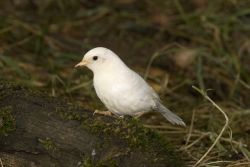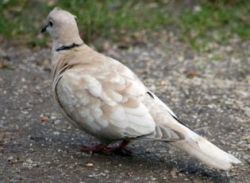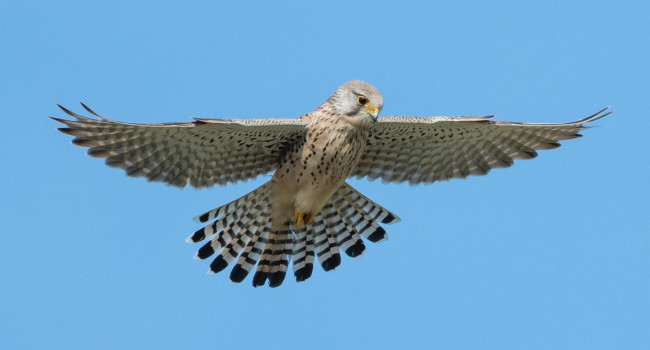Leucism and albinism
Leucism
Birds with leucism can appear completely white, or have unusual white feathers.
Why does leucism occur?
In leucistic birds, affected plumage lacks the cells responsible for melanin production. This means that melanin pigment – which makes feathers appear dark – is absent. Affected feathers are therefore white, unless the normal plumage colour also comprises carotenoids (e.g. yellows), which remain unaffected by the condition.
White feathers can also be caused by chromatophore (pigment cell) defects, rather than an absence of melanin-producing cells, but this is considered a different condition to leucism.
Leucism is inherited, but the extent and positioning of the white colouration can vary between adults and their young. It can also skip generations if leucistic genes are recessive (this means that a chick needs a leucistic gene from both parents in order to have leucistic plumage).
The impact of leucism on individual birds
The reduction of pigment in leucistic birds causes feathers to weaken and be more prone to wear. In some situations, this can hinder flight, which, in addition to leucistic birds usually being more conspicuous, can heighten risk of predation. There is also evidence that leucistic birds might, on occasion, not be recognised or accepted by a potential mate.
Progressive greying
In our Abnormal Plumage Survey, ‘leucism’ is being used as an umbrella term to encompass a number of plumage irregularities that can be difficult to distinguish from each other.
One of these is called ‘progressive greying’, which also results in white feathers. While leucism is heritable, progressive greying is not – but without knowing the history of a bird, these two conditions are difficult to tell apart.
Dilution
‘Dilution’ is another condition that we have grouped under the category ‘leucism’ in our Abnormal Plumage Survey. Here, plumage colour often appears ‘washed out’ (i.e. ‘diluted’). This Collared Dove (pictured) is a good example of this.
In dilution, melanin cells are present (unlike in leucistic birds) but produce less pigment than normal.
Albinism
Like leucism, albinism also results in white feathers, but true albinos are thought to be rare in the wild. A common misnomer is ‘partial albino’ – this is not possible since albinism affects the whole plumage of a bird, not just part.
Why does albinism occur?
Albinism is caused by a genetic mutation causing an absence of tyrosinase in pigment cells. Tyrosinase is an enzyme that is required for melanin production, so its absence means that an albino individual is unable to produce melanin pigments.
Albinism affects every cell in the bird’s body, which leads to a good diagnostic feature with which to distinguish leucistic and albino individuals – the colour of the eye.
- Albino birds have pink eyes while the iris pigmentation of leucistic birds remains dark.
As with leucistic birds, albino birds can produce carotenoid pigments if they are normally present in the plumage, so some yellow, orange or red feathers may occur.
The impact of albinism on individual birds
Most albino birds die soon after fledging, primarily as a consequence of their poor eyesight, and albino birds are not thought to progress to adulthood in the wild.
Report unusual plumage
If you have seen a bird with unusual plumage in your garden please complete our simple online Abnormal Plumage Survey form.








Share this page